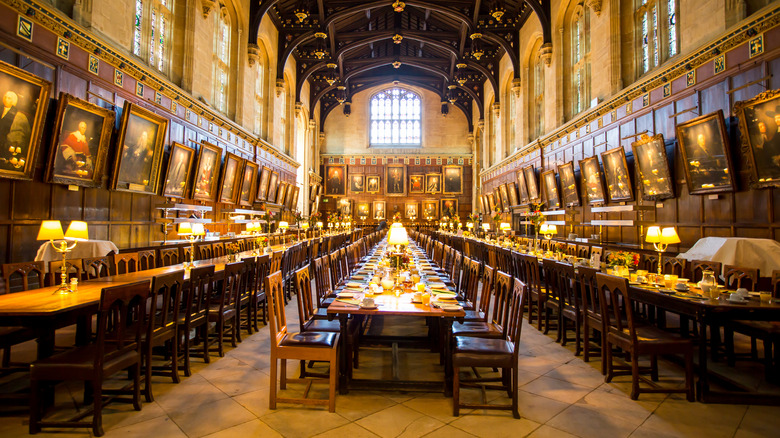Travel Guides Family Friendly
Aeypix/Shutterstock
Aimee Long
Jacobite Steam Train, Scotland
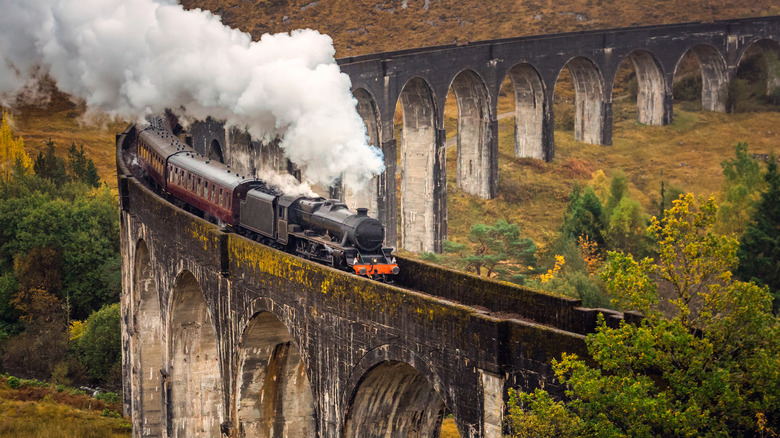
Nearly all of the Harry Potter movies feature scenes aboard the Hogwarts Express. Whether Harry and Ron are busy buying “the lot” from the trolley, dementors are boarding the train, or Crookshanks is attempting to nibble on Scabbers, some of the series’ most important moments are set as Scotland unfolds outside the train window.
Scotland’s Jacobite Steam Train doubles as the famed Hogwarts Express. Screaming 84 miles through some of Scotland’s most stunning countryside, the Jacobite runs from Fort William to the pipsqueak town of Mallaig and back. Many of the vistas you see from the train window in Harry Potter are glimpses of Loch Morar, the U.K.’s deepest loch.
The Jacobite Steam Train doesn’t run during winter, and opening dates vary. Morning Service typically starts at the end of March and extends until the end of October, while Afternoon Service usually begins at the beginning of May and ends at the end of September. Prices for adults start at £65 for standard class, £98 for 1st class, and £210 for a private table for two. If you really want to set the tone, order a Jacobite High Tea to nosh on. It’s also possible to witness the iconic crimson carriages steaming across the famous Glenfinnan Viaduct in true Harry Potter glory. In fact, this is probably the best view of the train itself. Head out to the small village of Glenfinnan for a twice-daily chance (in high season) to see the train.
Cliffs of Moher, Ireland
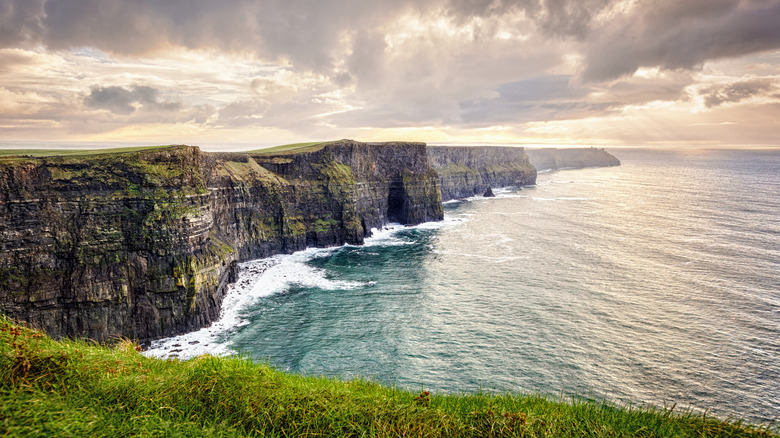
Fans will remember the dramatic scene where Dumbledore and Harry apparate to a rocky island at the entrance to a coastal cave where Voldemort has hidden a Horcrux. The wind whips around them, and the sea crashes into the cliffs, creating a moody and foreboding scene. This epic landscape is home to the Cliffs of Mother — one of Ireland’s most scenic landmarks.
Tucked along Ireland’s southwestern coast, the Cliffs of Moher plummet a staggering 700 feet of sheer rock to the tumultuous sea below. Because the Cliffs of Moher are so famous, it’s not difficult to reach them from practically anywhere in Ireland, and tours run daily from Dublin and any of the larger towns. Prepare for inclement weather and the notoriously wicked winds — wrapping up is essential.
If you find yourself wondering where the iconic rock that Harry and Dumbledore apparate to is, it’s not at the Cliffs of Moher at all. You’ll have to venture over 150 miles (253 km) south to the Skellig Islands to see “Lemon Rock,” its official name.
King’s Cross Station, London
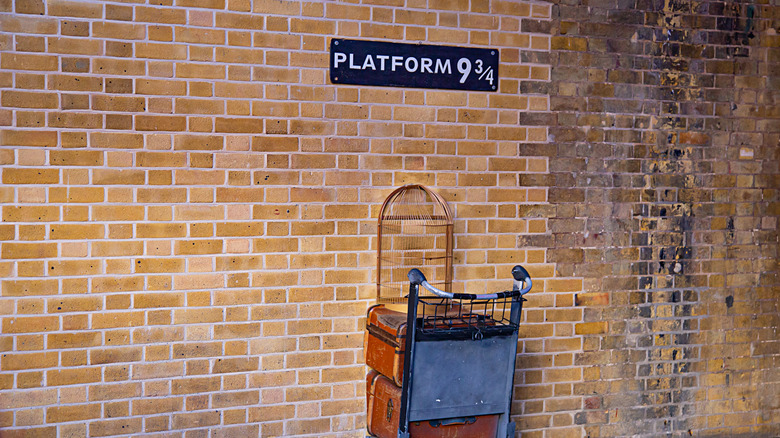
Julia Pobedynska/Shutterstock
While you won’t be disappearing into the stone walls of King’s Cross, intent on climbing aboard the Hogwarts Express, you can certainly pretend you’ve received your letter. Locate the luggage cart at Platform 9 ¾ (actually at Platform 8 in the main station concourse) for the perfect photo opp.
Scarves are provided for each house, so whether you’re a Hufflepuff or a Slytherin, you’ll be shoving off from King’s Cross in style. The onsite photographer will even take a professional picture of you running off to Hogwarts, which you can purchase in the Gift Shop.
Want to pop by the real-deal location where they filmed the famous scene? Head out to Platforms 4 and 5. Signage was changed to 9 and 10 for movie-making purposes. If the station’s facade looks different from the movie, that’s because it was actually a clip from the nearby St. Pancras Station.
Seven Sisters Chalk Cliffs, Brighton
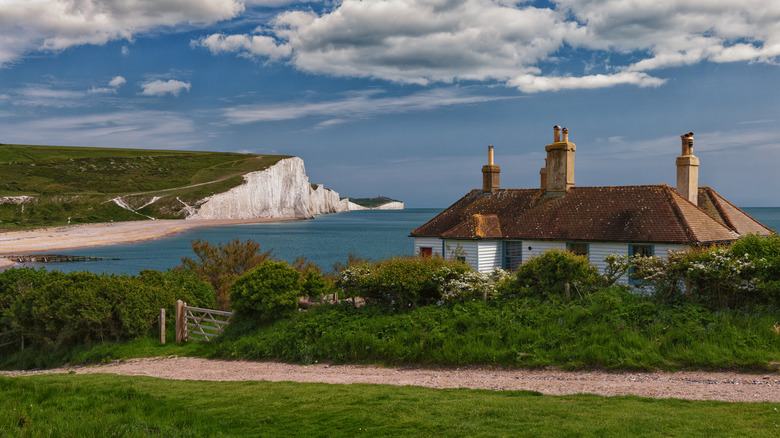
John_gilham/Getty Images
“Harry Potter and the Goblet of Fire” starts with the electric match between Ireland and Bulgaria in the Quidditch World Cup. Harry and his friends arrive by portkey to a beautiful backdrop of coastal vistas and ivory cliffs. Those sheer walls of ivory, rising from the cerulean sea, are the Seven Sisters Chalk Cliffs. After catching a brief glimpse of the Chalk Cliffs on their arrival, they appear again as night falls and the match begins, the camera panning to an exterior view of the stadium perched dramatically on a cliff.
Located just outside the bustling seaside town of Brighton, the Seven Sisters Chalk Cliffs are one of the most striking landscapes in England. The area is protected and is designated as the Seven Sisters Country Park, complete with pebbled beaches, rolling hills, and the mighty Cuckmere River snaking its way to the sea. Hiking and biking paths wind through the park, revealing a lost village and grazing sheep.
Try to plan your visit for an (often elusive) sunny day, as the stark contrast between the snow-white cliffside, lime-green grass, and turquoise sea is stunning. It’s exceedingly easy to reach the park from London — simply take the train down to Brighton, where a local bus drops off visitors at the park entrance several times a day.
Gloucester Cathedral
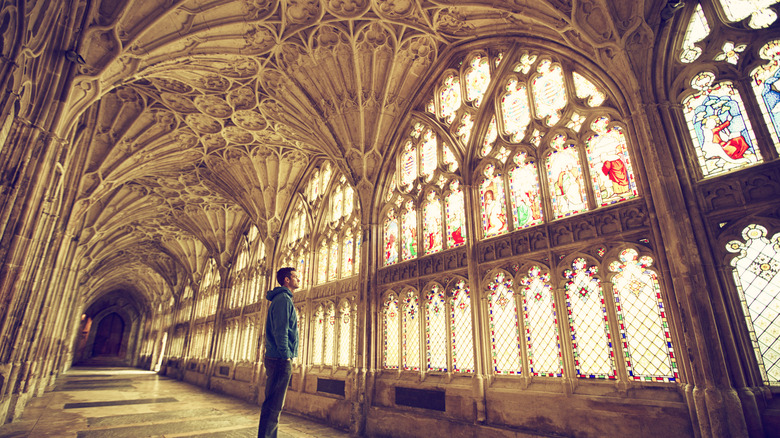
Richvintage/Getty Images
From the cozy Gryffindor Common Room to Moaning Myrtle’s loo haunts and the iconic “Chamber of Secrets” wall dripping with blood, fans can check off almost a dozen filming sites in this one location, so head straight for the cloisters to get started on your hunt for Harry Potter filming sites — an interactive screen details where they are throughout the cathedral and its grounds. The North Corridor’s East Wall is where the sinister blood message was written in the “Chamber of Secrets,” while the East Corridor hides the bathroom where Moaning Myrtle hangs out. The Lavatorium was the backdrop for the beginning of the “Sorcerer’s Stone” troll scene.
Gloucester Cathedral is over 1,300 years old and showcases a stunning mix of Gothic and Romanesque architecture. Its stoic central tower, cloisters, and delicate carvings provide the perfect backdrop for castle-like scenery. Several trains leave from London’s Paddington Station daily, and the journey takes just under two hours, making this a wonderful day trip from the English capital with beautiful scenery along the way. Entrance is technically free, but a small donation is requested. Guests can really lift the veil by joining a guided tour for just £6. This reveals the crypt and allows you to climb the 263 steps to the top of the tower, among other “secret” experiences.
London Zoo Reptile House, London
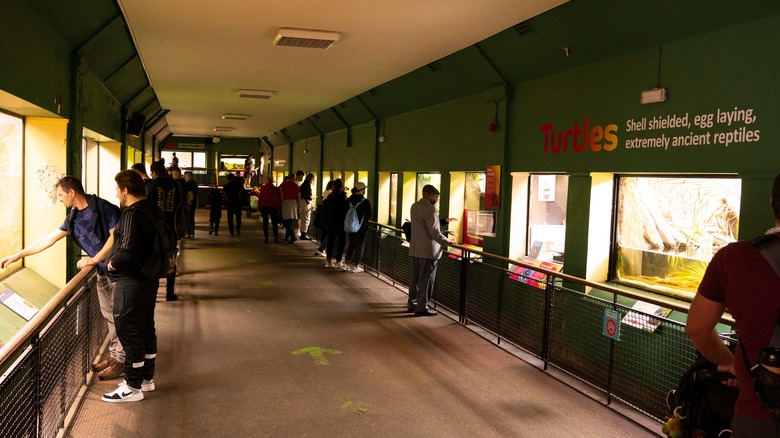
Erhan Inga/Shutterstock
In one of the opening scenes of “Harry Potter and the Sorcerer’s Stone,” Harry practices his parseltongue — speaking to snakes — for the first time at London Zoo’s Reptile House. After conversing a bit with a boa constrictor from Burma, he accidentally sets it free by causing the glass wall of the enclosure to disappear. His mean cousin Dudley falls into the exhibit, causing a scene as the snake slithers away, and he is subsequently trapped as the glass reappears.
Visitors to the London Zoo can see the facade of the original filming location for the scene inside the Reptile House. Unfortunately, the zoo recently decided to move the reptiles and amphibians to a new site, and it’s not known whether the original Reptile House (constructed in 1926) will be reutilized. Opened to the public in 1847, the London Zoo is one of the oldest in the world. Nestled in Regent’s Park, tickets for adults start at £27 on weekdays.
Millennium Bridge, London
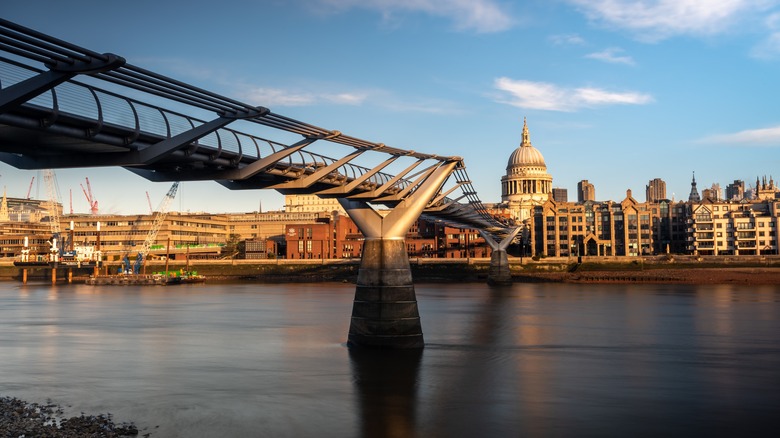
SAKhanPhotography/Shutterstock
As Voldemort’s power grows, the Muggle world finds itself in the middle of a wizarding war as more attacks begin to impact them. One of the first indications is the collapse of London’s iconic Millennium Bridge. Spanning the Thames River, this pedestrian-only bridge is a beautiful spot to admire the city’s scenery but a bad spot to be if you’re an innocent bystander in “Harry Potter and the Half-Blood Prince.”
The movie shows the contemporary bridge twisting and twirling in the air until it ultimately falls into the river below. By coincidence (or maybe not so coincidental), the Millennium Bridge was forced to close on the same day it opened due to an alarming wobbling sensation – a problem that allegedly continues to this day. It’s been frequently plagued by structural issues, including a recent closure thanks to worryingly rapid degradation.
Visitors can stroll across the bridge, if they dare, to span the river between the Tate Modern Art Gallery and the iconic St. Paul’s Cathedral.
Durham Cathedral
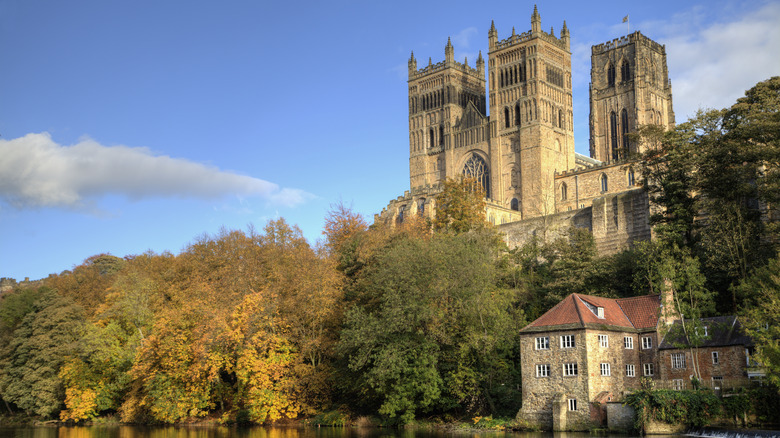
Gannet77/Getty Images
Durham Cathedral sets the scene for many of Harry’s strolls through the grounds of Hogwarts. Visitors can immerse themselves in Harry Potter fantasies by ambling beneath the cathedral’s soaring Romanesque architecture, past the kaleidoscopic stained glass, and among the intricately carved cloisters.
Fans will remember a particular scene when Harry carries Hedwig out into the thick, falling snow, emerging from Durham Cathedral’s cloister. This is the same grassy area where Ron curses himself with “eat slugs.” And if you’ve ever seen Filch creeping around with his giant castle keys, this is actually a set of keys from Durham Cathedral.
Aside from being a place of worship, Durham Cathedral has almost 900 years of history and heritage. Visitors can check out the museum, pick up a souvenir at the gift shop, or grab a bite to eat at the Undercroft Cafe. The grounds also make for an idyllic stroll as the Wear River burbles right past the cathedral, and ancient forests of yew and lime trees grow in its shadow.
Entrance to Durham Cathedral is free, although a £5 donation is suggested to help with its upkeep. Visitors can book several tours to climb the 326 steps to the top of one of its towers or learn about its history. Tour tickets are just £7.50 for adults.
Oxford University
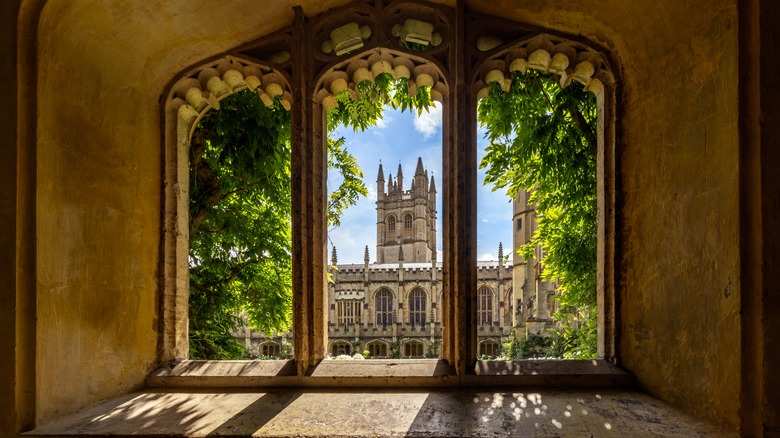
jimmonkphotography/Shutterstock
Many scenes of Hogwarts academia were filmed at none other than England’s most storied university — Oxford. From the stunning Bodleian Library, doubling as both the Hogwarts Library and the Infirmary, to the students arriving for the first time on the Christ Church College’s stone staircase, Oxford’s striking architecture provided the perfect backdrop for educating young witches and wizards.
While there are guided Harry Potter tours that explore the Oxford campus, you can easily do a DIY tour and seek out the filming locations for yourself. Christ Church’s grand Bodley Staircase set the scene for many clips, including Harry’s arrival at Hogwarts and his first encounter with Tom Riddle. The Bodleian Library has two important locations: Duke Humphrey’s Library and the aptly named Divinity School. Harry recovered from multiple injuries in the Divinity School, including his jellied arm (at the hands of Gilderoy Lockhart) and falls from his broomstick during a Quidditch match. This is also the backdrop for dance practices leading to the Yule Ball in “Harry Potter and the Goblet of Fire.” While strolling the New College cloister, check out the setting for the hilarious scene when Mad-Eye turns Draco into a ferret.
You might recognize some touches of inspiration for the books and movies that were inspired by Oxford, including the Dining Hall and its soaring ceilings. While some speculate that the Hogwarts uniforms are reminiscent of Oxford’s, they’re actually much closer to Portugal’s student uniforms, complete with a dramatic black cape.
Scottish Lochs, Scotland
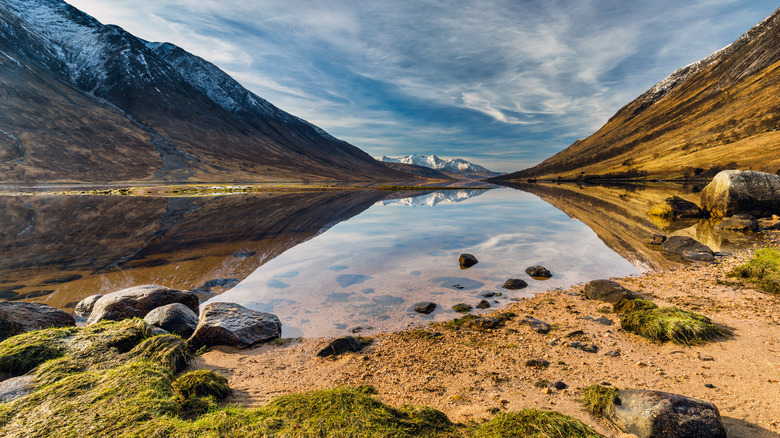
Jim Monk/Getty Images
Five of Scotland’s most beautiful lochs were used as filming locations for Harry Potter, providing remote landscapes for the witches and wizards to hide away. Many, such as Loch Morar, became the setting for the Hogwarts Castle, which sat perched on the edge of a lake. Others, like Loch Etive, were the setting of Harry, Ron, and Hermione’s escape from the back of the Gringott’s dragon.
Loch Shiel, situated along the famous Glennfinnan Viaduct, is the serene beauty in the background of Hogwarts Express scenes and doubles as the Black Lake, where the Hogwarts Castle sits along its edge. Loch Eilt, also seen from the Jacobite Steam Train, provided the backdrop for Hagrid’s stone-skipping scene as he comes to grips with Buckbeak’s imminent execution. Eilean na Moine (the island in Loch Eilt) was also used as Dumbledore’s tomb, although Loch Arkaig was blended with this Loch Eilt to create his dramatic gravesite.
You can easily connect the dots between these lochs by rail or road trip. Loch Shiel, Eilt, Arkaig, and Morar are all within easy driving distance from each other, although Loch Morar is a few hours’ drive south.
Alnwick Castle
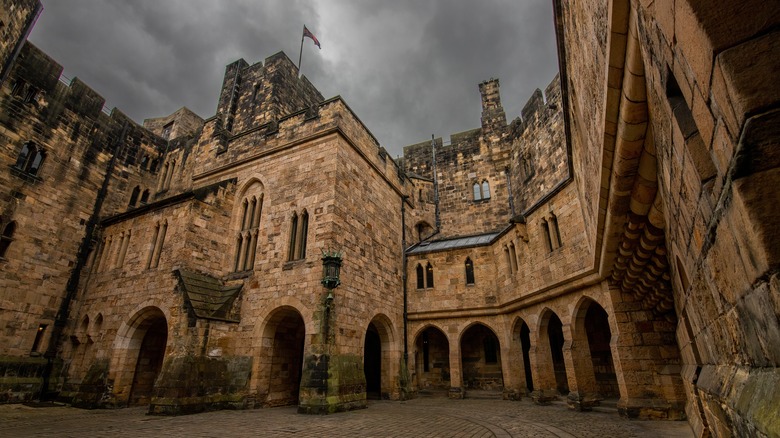
Wallophoto/Shutterstock
Alnwick Castle is where Harry learned to ride a broomstick. Need we say more? The emerald green grounds outside the castle itself are where young Potter pushed off for the first time, causing Madame Hooch to fly into a tizzy. The castle was later used for general scenes around Hogwarts in the first two movies, including the front gate where Harry, Ron, and Hermione go searching for Hagrid’s hut.
Once you’re on the castle grounds, set out for The Outer Bailey, where first Harry took flight and learned about Quidditch from Oliver Wood. The Inner Bailey was commonly used as a backdrop for the comings and goings of Hogwarts students and doubles as the site where Ron and Harry crashed the Weasley’s flying car. Lion Arch was the entrance to Hogwarts as the gang made a break for Hagrid’s Hut.
You can hop on the Alnwick on Location Film Tour to see all the Harry Potter sites without having to search for yourself and even take part in their Broomstick Training course in The Outer Bailey. History buffs are also taken care of with several tours that detail the castle’s interesting past.
The castle closes in winter, re-opening at the end of March through the end of October. It is technically still the Duke of Northumberland’s residence, after all. Tickets for adults start at £19.50.
Steall Falls, Scotland
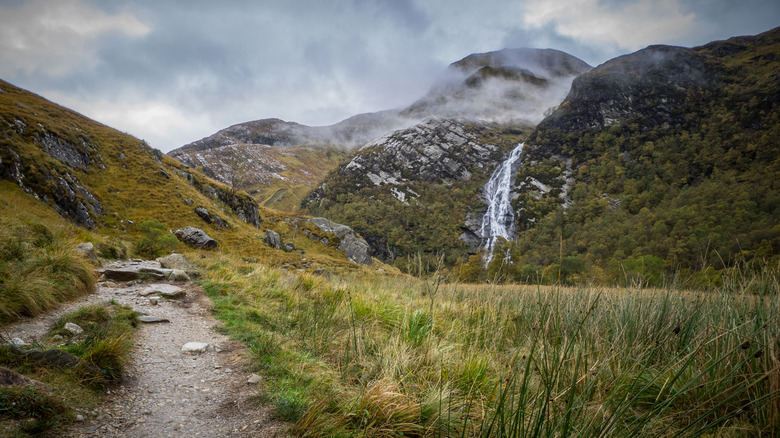
Andreas Gerhardinger/Shutterstock
Located deep in the Scottish Highlands, Steall Falls is the setting of the Triwizard Tournament, trickling in the background of the rocky landscape. Harry narrowly escapes the clutches of the Hungarian Horntail, all with Scotland’s second-highest waterfall as a backdrop. The waterfall actually appears in five different movies and makes for a fun Easter egg to search for when watching the films — and an even better destination to visit.
Potterheads can reach the 393-foot falls via a 2-mile hike from the Glen Nevis lower car park near the town of Fort William. Having your own set of wheels is ideal for getting to the car park area, although a taxi will also do the trick. Be aware that the parking lot is relatively small and fills quickly in the hiking season, which typically runs from April to October.
Head back into Fort William afterward to hop aboard the Jacobite Steam Train or take in the views of Loch Eil. And remember, if in trouble, “Expecto Patronum” should do the trick.

